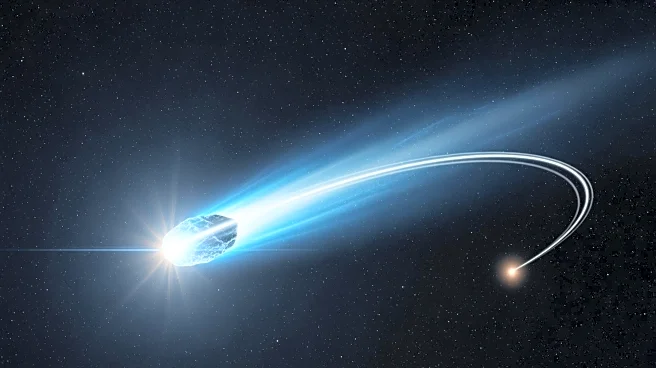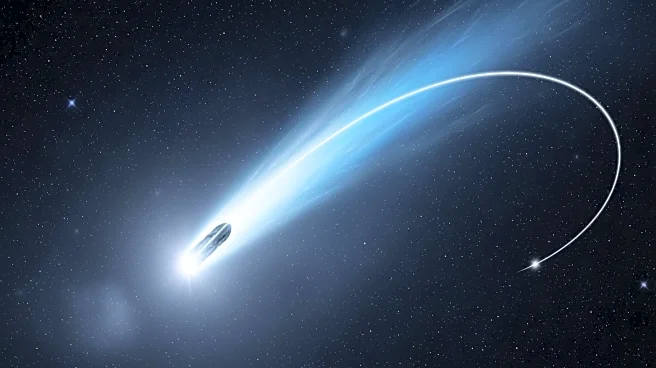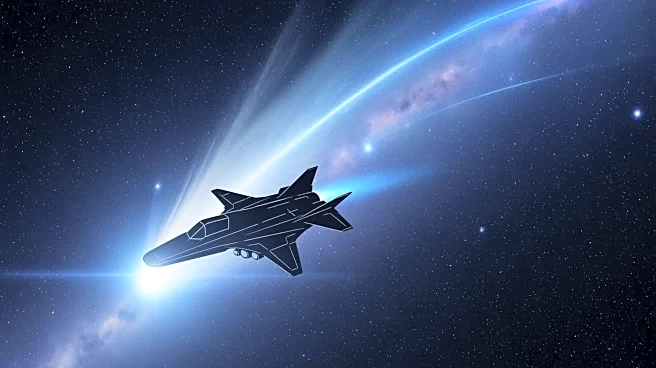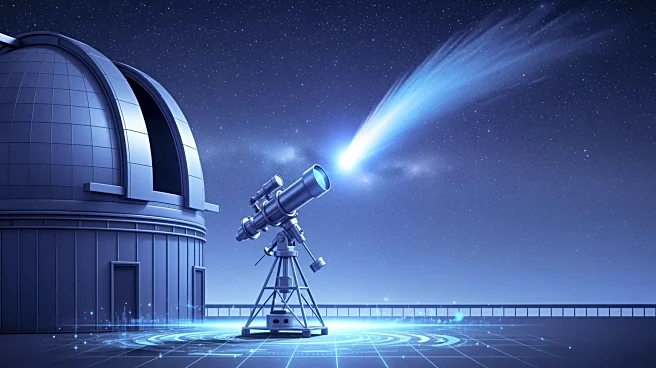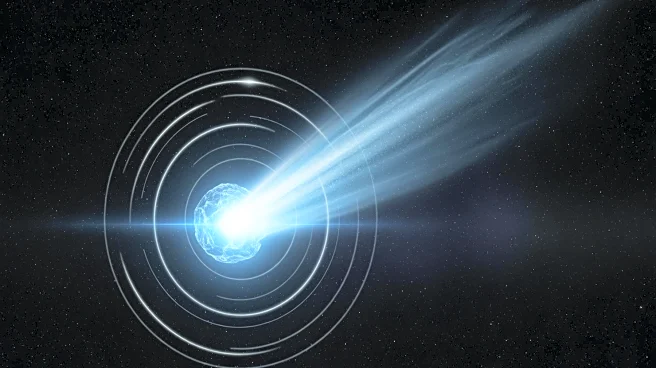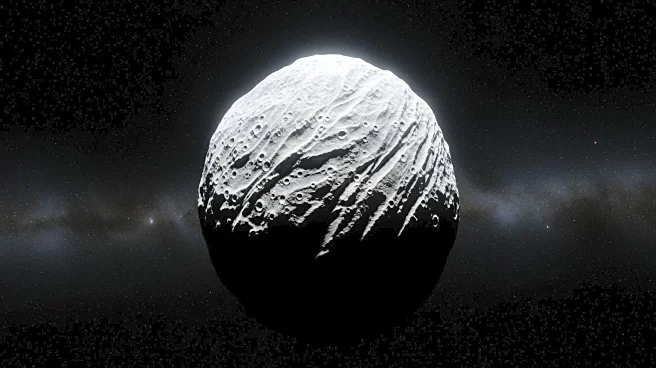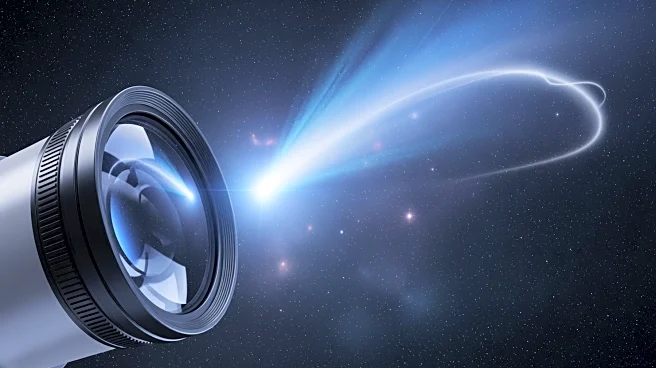What's Happening?
The European Space Agency (ESA) has improved predictions for the trajectory of interstellar comet 3I/ATLAS, which is set to make a close approach to Earth in December 2025. This comet, only the third confirmed
interstellar object to pass through our solar system, was first spotted in July 2025. ESA utilized the ExoMars Trace Gas Orbiter to observe the comet from Mars, allowing for a more precise calculation of its path. The comet's trajectory is hyperbolic, meaning it will not be captured by the Sun's gravity and will leave the solar system after its flyby. The comet's nucleus is estimated to be between 440 meters and 5.6 kilometers across, and it is traveling at speeds up to 153,000 mph.
Why It's Important?
The refinement of 3I/ATLAS's trajectory is significant for planetary defense strategies, demonstrating the capability to track potentially hazardous objects using spacecraft around other planets. Although 3I/ATLAS poses no threat to Earth, the techniques developed could be crucial in future scenarios involving dangerous celestial objects. The comet's interstellar origin offers a unique opportunity to study the composition and behavior of objects from outside our solar system, potentially providing insights into the formation and evolution of planetary systems.
What's Next?
On December 19, 2025, 3I/ATLAS will make its closest approach to Earth, passing at a distance of about 1.8 astronomical units, or approximately 170 million miles. NASA and other space agencies are preparing for global livestreams to observe the comet during this event. The comet's passage is expected to generate significant interest and provide valuable data for astronomers and scientists worldwide.
Beyond the Headlines
The comet's unusual composition, rich in carbon dioxide, suggests it may have formed in a cold region of its original planetary system. This provides a rare laboratory for studying planetary system formation and evolution. The comet's behavior, including its brightening and tail formation, has been explained through standard physical processes, countering any speculation about its nature.
